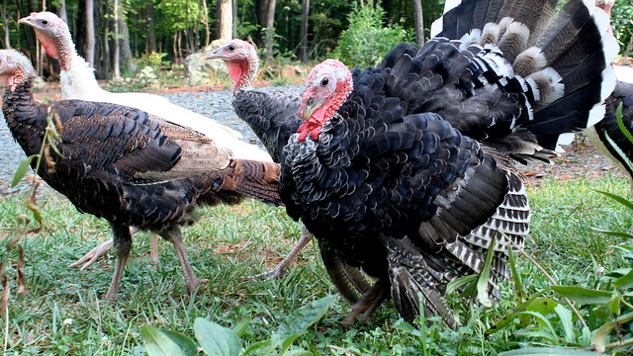Chefs Dish On How To Cook Your Heritage Thanksgiving Turkey
So, you want to avoid the commercially bred turkey this year, and buy a bird that’s been bred locally and boasts heritage pedigree, one that’s likely roamed around and eaten all sorts of things it’s supposed to eat. To mix metaphors, this is surely a bird of a different color, so there are some things to keep in mind—once you get past the fact that these are going to cost more than supermarket turkeys.
First, they have less fat and are more lean—the muscles are getting more work than what you would typically find in mass-produced birds. They can be much smaller, but it depends on the breeds and “if the farmer gets them on the ground early enough,” says Chef Craig Deihl of Cypress and Artisan Meat Share in Charleston, South Carolina. They can also be much richer in flavor. Both preparation and cooking methods become even more important, given these factors, says Deihl.
“Because of its muscular structure and smaller breasts, it needs to be cooked at a lower temperature for a longer period of time if you’re going the traditional route of [roasting].” For a less traditional approach, a low-temperature smoke works well because you can separate the breasts from the leg quarters and “it’s a much more controllable process,” he says.
“If you want to take it even further, spatchcocking it, where you remove the backbone and flatten the turkey so the legs and thighs push up into the breasts, is ideal. The bird cooks evenly, stays moist,” Deihl says. He suggests a low-temperature broil before serving for crunchy skin. Diehl knows a few things; he’s a multi-James Beard Award nominee, and a founding member of the Butcher’s Guild.
Chef Michael Leviton, an eight-time James Beard Award nominee and chef-owner of Lumiere in Newton, Massachusetts admires the flavor of heirloom breeds. “Both the dark and white meat have a much deeper flavor. The dark meat is darker with heirloom birds. It’s nice and livery—in a good way.” In general, he says, the birds are more flavorful. But the breast meat is not going to be abundant as it is in commercial birds. As a result, you need to be a little gentler with these birds.
He advocates cooking them at high heat, say, 500° F for about a half an hour to give the bird a chance to bronze, and then drop it down to 225° until it’s finished. There are questions of sustainability and ethics that may come into play regarding your decision to going heirloom, but there are some health benefits, too. “If you buy a turkey that isn’t pumped full of awful stuff, it’s going to be better for you,” says Leviton.

ancapron CC BY